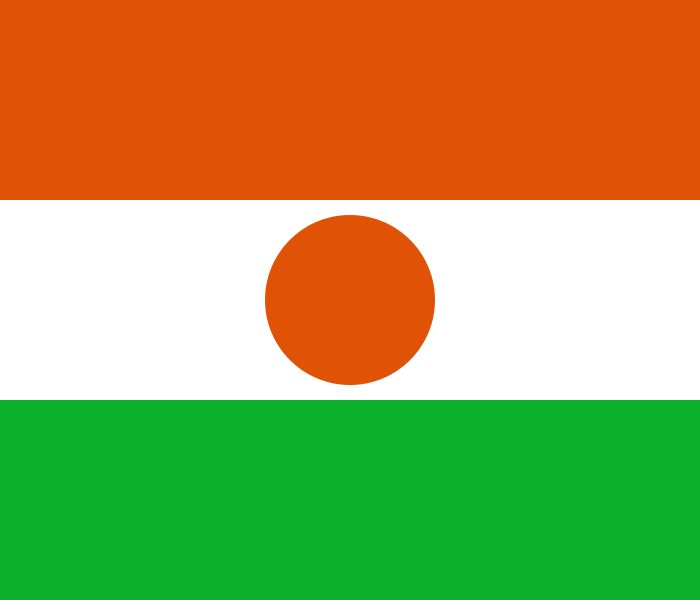The flag of Niger features a tricolor design consisting of three equally-sized horizontal stripes running from top to bottom, with proportions typically measured at 6:7 (width to length ratio).
The Top Stripe, colored in vibrant orange, represents the northern part of the country, encompassing the expansive Sahara Desert. This hue symbolizes the warm and arid climate prevalent in this region. Additionally, the orange color is emblematic of Niger's mineral wealth, particularly uranium, a critical natural resource supporting the nation's economy.
The Middle Stripe, a pristine and bright white, holds traditional connotations of peace, purity, and innocence. Within the context of the Niger flag, white also represents the unity and solidarity among the diverse ethnic groups inhabiting the country. It serves as a symbol of peaceful coexistence and harmony among the people of Niger, while also embodying their collective hope for a peaceful and prosperous future.
The Bottom Stripe exhibits a lush shade of green, symbolizing the fertile regions situated in the southern part of the country, where agriculture thrives. The green stripe signifies the abundance of vegetation, growth, and prosperity associated with this region. It further emphasizes the vital role of agriculture as a significant sector of the economy, providing sustenance and livelihoods for a considerable portion of the population.
At the center of the white stripe, slightly offset toward the hoist side (left side), lies a small circular orange five-pointed star, often referred to as the "Nigerian orange." This star is a representation of the sun, a crucial element signifying life, energy, and warmth. The orange color of the star connects it to the northern region of Niger. Additionally, the star embodies the hopes and aspirations of the Nigerien people for a bright and successful future.
In conclusion, the design and colors of the Niger flag encapsulate the nation's geographical diversity, cultural richness, and aspirations for progress and unity. The flag serves as a powerful symbol of national pride and identity, reflecting the collective history and values of the people of Niger. It was officially adopted on November 23, 1959, shortly before Niger gained independence from France on August 3, 1960, and has since remained a proud representation of the nation's sovereignty and unity.
Last Updated on: July 31, 2023